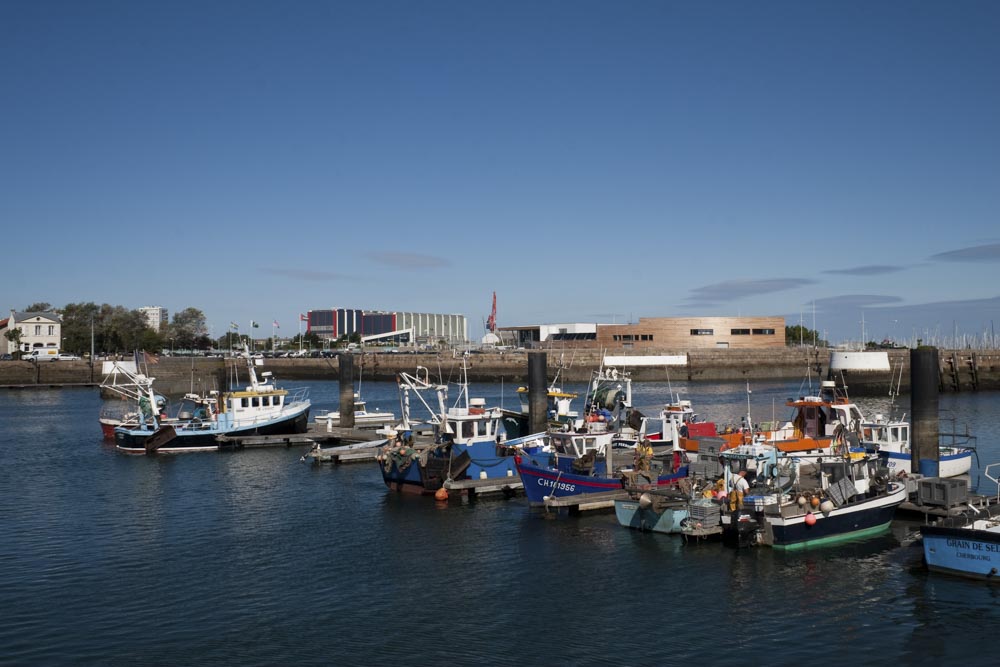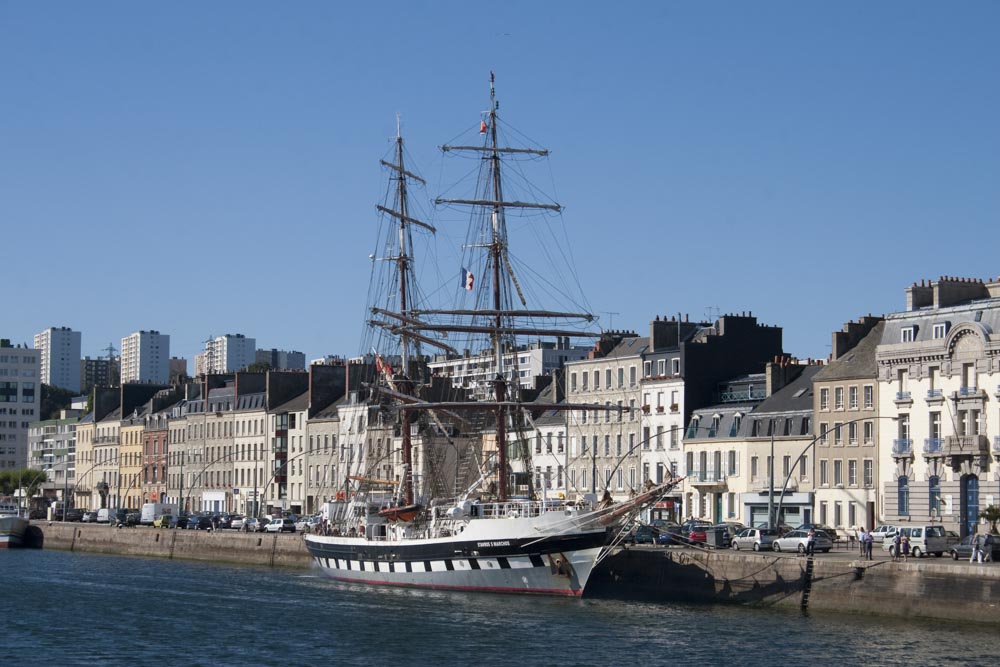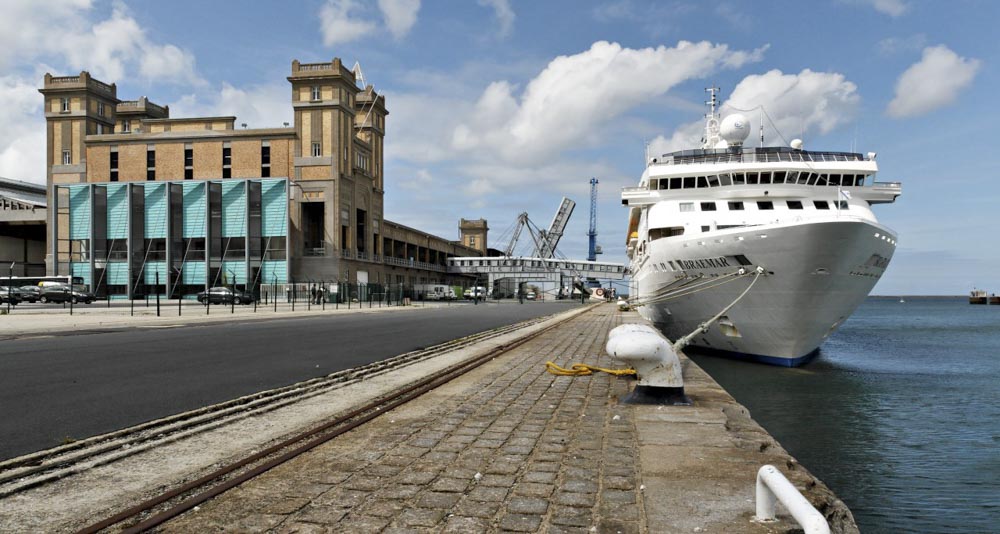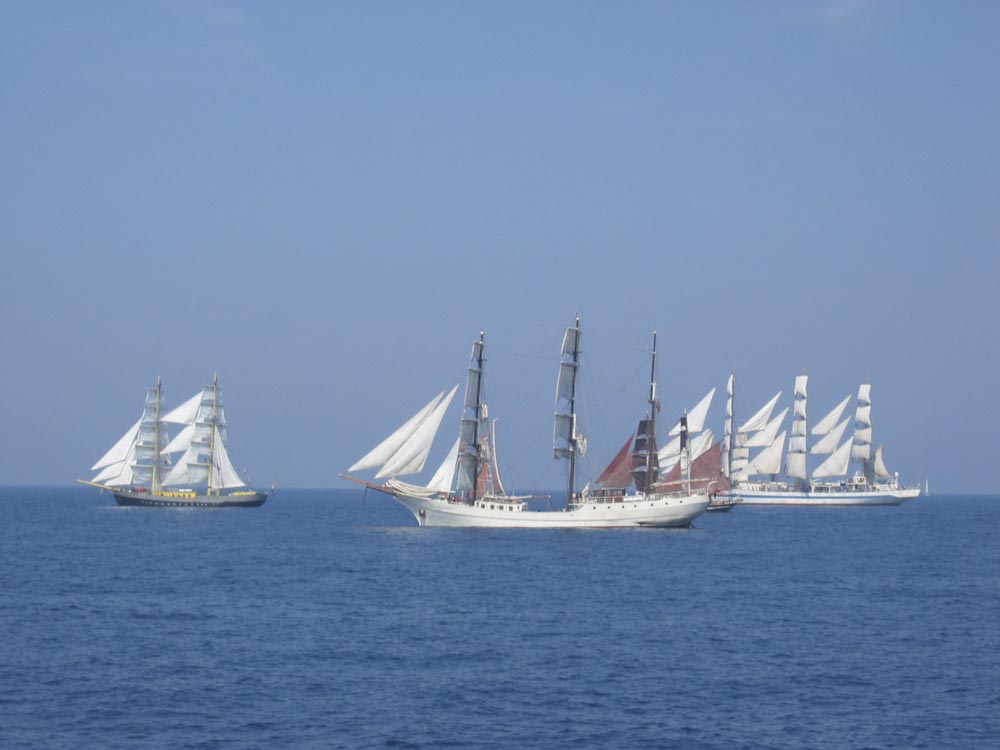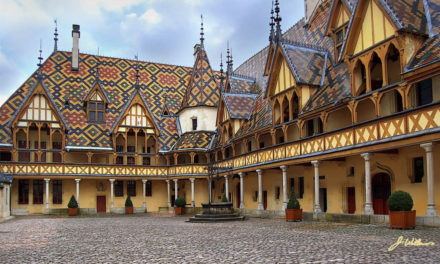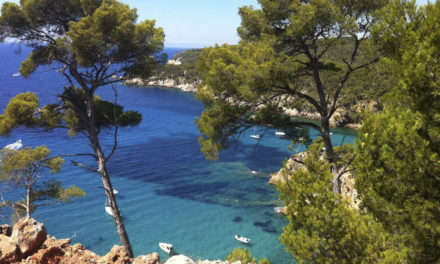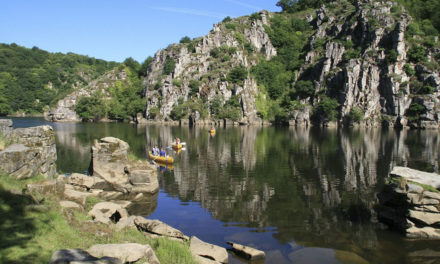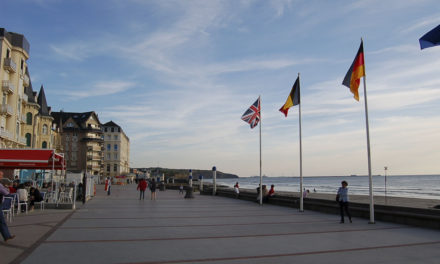Cherbourg-Octeville is situated at the north of the Cotentin Peninsula facing the Channel in the Manche department of Normandy, north-western France. Originally just Cherbourg, the city combined with Octeville in February 2000 and is now an urban community of 51,000 inhabitants. The residents are known as Cherbourg-Octevillais and the local dialect is Cotentinais. Cherbourg lies at the heart of the largest artificial harbour in the world and it is one of the best connected ferry ports in France. The harbour has four ports with numerous activities including a marina, a commercial port, passenger transport, a fishing harbour and a naval port. Historically, an ancient naval city, the Port du Plaisance Chantereyne Marina has everything the yachting world might need and is an exceptional recreation ground for sailing boats with regular regattas and major nautical events. The town is a half a mile walk from the quay with plenty of shops, bars and restaurants along the way.
Book a Hotel in Cherbourg
History
The Cotentin Peninsula was the first territory conquered by the Vikings in the 9th century and they were responsible for developing it as a port. During the Seven Years’ War, the British briefly occupied the town in 1758 destroying military buildings and much of the local industry before leaving. In the Napoleonic period, the harbour was fortified to prevent further British invasions and underwater obstructions were sunk to exacerbate entry to the port. Started under Louis XVI and finished under Napoleon III, the harbour covers 1500 hectares. In all, the three harbour walls are over 2 miles long which connect with Pelée Island and have three forts: the western, central and eastern. The town is inextricably linked to the ocean and has played a key part in the defence of France against invasion for centuries.
During World War II, the Germans occupied the north of France and fortified the coastline against invasion. The Battle of Cherbourg, fought by the Allies in June 1944 against the Germans following the Normandy Invasion, ended with the Allies capturing the city on 30 June.
Attractions
There are three museums in Cherbourg. The Musée des Beaux-Arts Thomas Henry has a collection of over 300 paintings, founded on the original collection of Thomas Henry, a local resident, with a good collection of works by artist Millet. (Currently closed for renovation, it will re-open in 2015).
The former garden of the botanist, Emmanuel Liais, has become a public park and museum. It is beautifully landscaped and retains the character of a 19th century garden. These exotic gardens and greenhouses contain over 500 species of plants including some rare species shipped from South America and Asia in 1873 by Emmanuel Liais. The public gardens of Jardin Montebello were started by the Horticultural Society in 1872 and specialise in bamboos, magnolias, ferns and camellias. Both gardens have free entry. On the outskirts of Cherbourg, the Château des Ravalet, built in 1575, was classified as a ‘monument historique’ in 1935. It has a 42 acre park with aviaries, ponds, forestry and a waterfall – a very special place to visit.
Towering above Cherbourg from the top of the Montagne du Roule, there is a 19th century fort (Fort de Roule) presenting a magnificent view of the harbour and over the city. The Liberation Museum is housed in this military fort which has been completely renovated and enlarged for the recent celebration of the 50th anniversary of the D-Day Landings. Covering the invasion of Cherbourg to its reconstruction, a series of lifelike scenes from World War II brings the museum to life.
Le Point du Jour, is a new art centre opened in 2008. Designed by the architect Eric Lapierre if offers regular exhibitions devoted to contemporary photographers. The Cherbourg Theatre (Théâtre d’Or) was constructed at the end of the 19th century and is one of the last surviving theatres built in the Italian style. The painter Georges Clairin decorated the ceiling and designed the allegorical representations of comedy, drama, music and dance and two large works “The Sea Wall” and “The Countryside” which adorn the main staircase.
For those who are interested in submarines, The Cité de la Mer museum complex is a fascinating experience. Opened in 2002, the museum is devoted to scientific and maritime history and is a hi-tech oceanographic centre located in the cruise terminal of Cherbourg. The port is the home of French nuclear submarines and le Redoubtable, now decommissioned, was the first to be built. It is the largest submarine in the world open to the public and is now lying in dry dock for visitors to explore. The museum is a huge open space full of various submarines and exhibits, including an aquarium.
Every Tuesday and Saturday there is a colourful flower market in Place de Gaulle (in front of the Theatre). On Thursdays the main market is held in the town centre.
Accommodation & Restaurants
Cherbourg is a lively town with numerous quayside restaurants, hotels and good shopping. Café de Paris is a real seaside brasserie. With an oyster bar on the ground floor, the upper floor has great views over the harbour. Diners can watch the trawlers coming in with their daily catch and enjoy excellent seafood cuisine. Le Vauban at 22 quai Caligny opposite the harbour bridge has a good local reputation for traditional French dishes and friendly service.
Hotel Napoleon is convenient for the Chantereyne Marina and near the Cité de la Mer Museum. Good value for money with plenty of restaurants nearby. La Marina is a modern, comfortable harbourside restaurant with a unique panoramic view over the port specialising in regional dishes using fresh local produce.
Transport
By car: From Paris, take the N13 road to Caen and the D901 to Cherbourg.
By train: Regular services operate from Cherbourg train station to Caen, Rouen, Paris St. Lazare (via Caen) and Rennes (via Lison). Cherbourg train station is located in the centre of the town and is a 5 minute taxi journey from the ferry terminal.
By air: The local airport is called Cherbourg-Maupertus.

